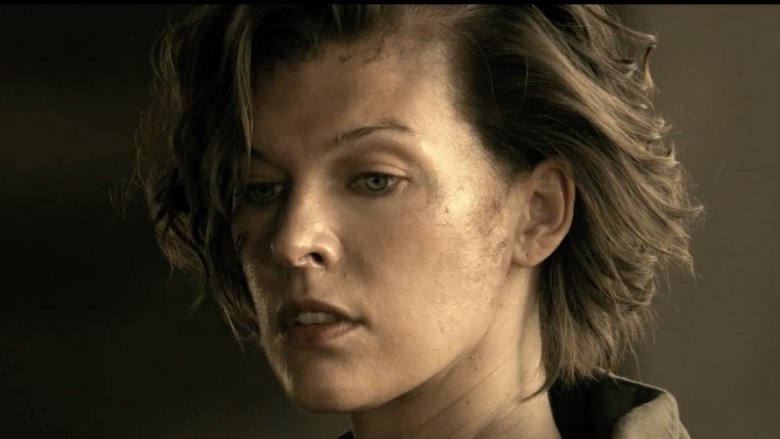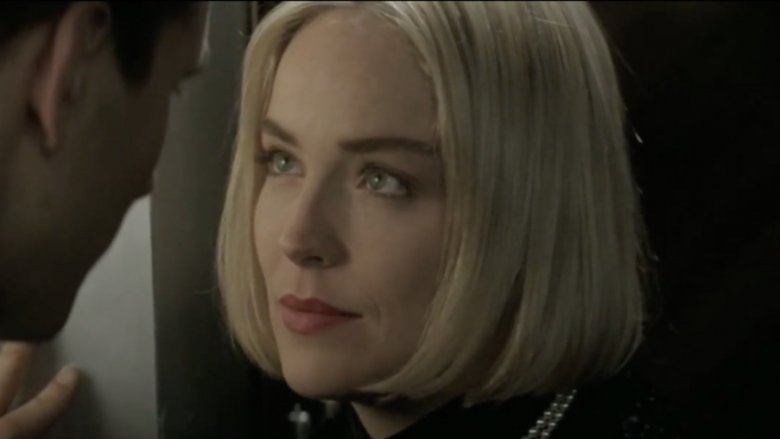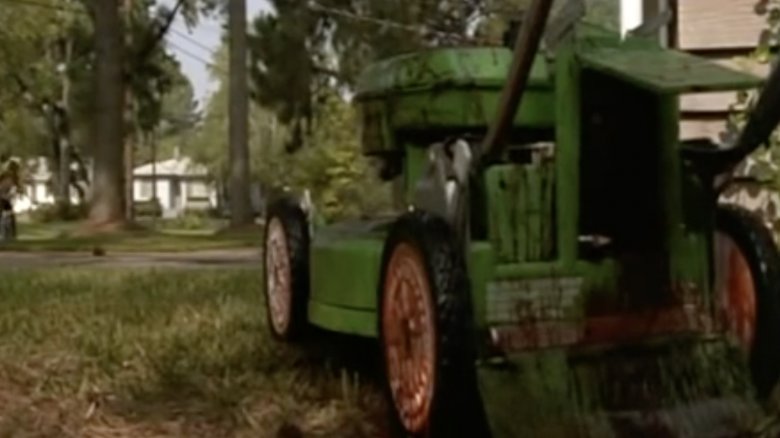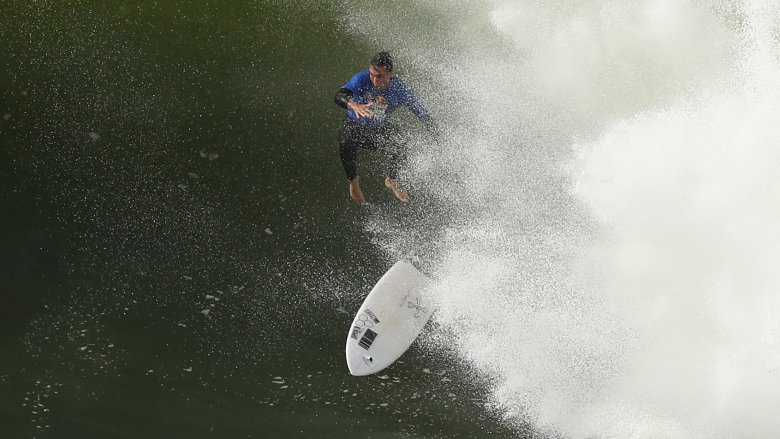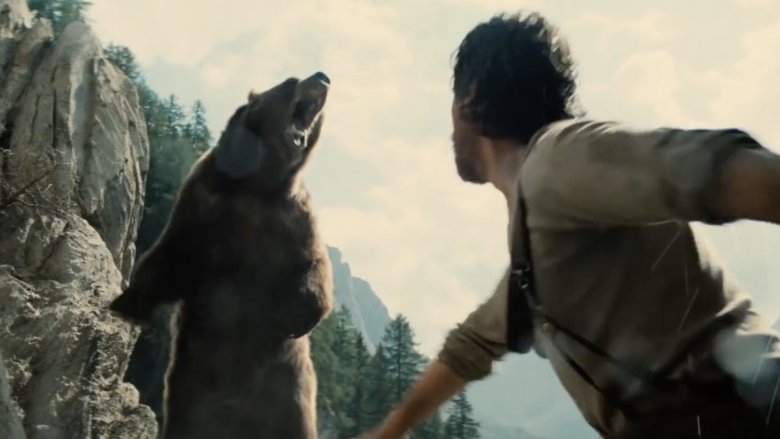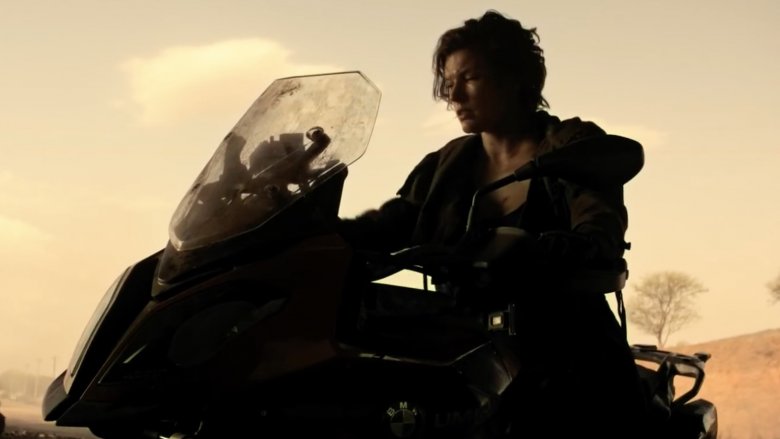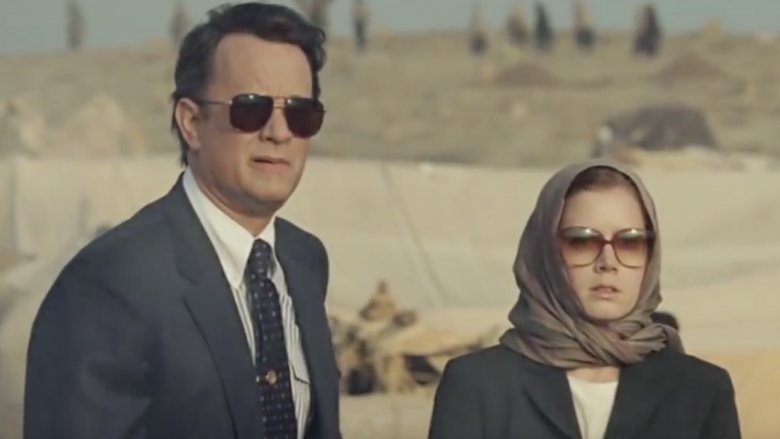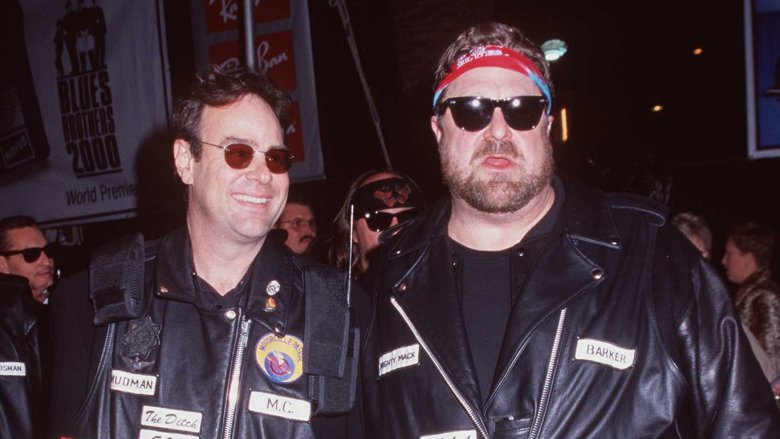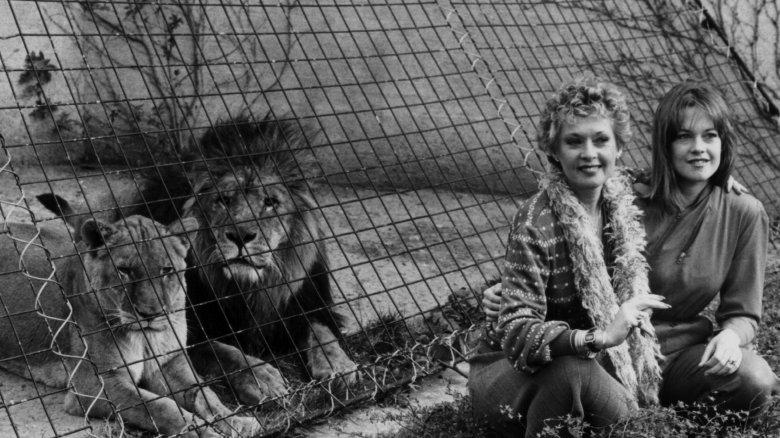Movie Scenes That Almost Killed Crew Members
It takes a lot of work from a lot of people to make a big Hollywood blockbuster. From writers to actors to directors and special effects specialists, a movie is only as good as its crew. While long days and arduous labor are par for the course, the vast majority of the time, a film set is a well-oiled machine, and every expert does their thing without a hitch.
But humans are imperfect, and life is unpredictable. Sometimes, things go wrong, and movie sets are no exception. On rare occasions, tragedy goes down — a stunt pilot for an aerial scene might lose control of their plane, or a stuntman horrifically fall to her death. Movie shots are painstakingly planned, but in spite of all that preparation, accidents do happen. Actors get injured, stuntmen pay the ultimate sacrifice, crew members end up in harm's way. Here's a look at some of the times when crew members walked away with their lives...as well as a couple of painful souvenirs from being in the Hollywood trenches.
A sliver of hope
The success of Basic Instinct in 1992 — and how it made a star out of Sharon Stone — left Hollywood (and filmgoers) with a taste for more erotic thrillers, specifically erotic thrillers starring Sharon Stone. Sliver hit theaters in 1993, offering a fairly straightforward mix of intrigue and sex to tell a story about the rampant voyeurism going down in a fancy New York apartment building. The version that titillated Stone fans was not the cut that filmmakers initially intended. Sliver was supposed to include some aerial B-roll footage of the Kilauea Volcano in Hawaii Volcanoes National Park.
The production dispatched camera operators Michael A. Benson and Chris Duddy to Hawaii to get the shots via a helicopter operated by pilot Craig Hosking. During the shoot, the helicopter lost power and crashed on the floor of the Pu'u ʻŌʻō crater...a couple of hundred feet from a pond of molten lava. A helicopter team rescued Hosking a few hours later, while rainstorms and toxic volcano fumes delayed the recovery of the cameramen. The next day, Duddy crawled out to safety, while Benson had to spend two days standing on a small ledge before his airlift.
Minimum Oversight
It's a common Stephen King plot: An inanimate object becomes haunted and tries to kill all humans (e.g. the possessed car in Christine). In Maximum Overdrive, it's all kinds of evil machines, including trucks, steamrollers, and lawnmowers. King directed the movie himself, which was utter chaos. "The problem with that film is that I was coked out of my mind all through its production, and I really didn't know what I was doing," King later admitted, referring to how he'd never directed a movie before.
And then the crew had enough to worry about a seemingly actually haunted (but radio-controlled) lawnmower. Director of photography Armando Nannuzzi set up his camera at the edge of a driveway to shoot a scene where the power mower rapidly speeds toward the camera, metal blades spinning as it goes. To make the mower look more imposing, the camera was angled up toward it, with some wood blocks placed underneath. Safety features of the mower were removed to show off those blades, and it was rigged to move faster than normal. The mower, set loose, zoomed toward the camera...and hit one of those wooden wedges. That rapidly sliced off flying wood slivers, which hit Nannuzzi in the eye and face. Nannuzzi says that it lead to a permanent loss of some eyesight, which is quite tragic for a photographer. (That's why he sued King, and Dino De Laurentiis Productions, for $18 million.)
Point Break breaks jaw
One movie about an FBI agent who goes deep undercover in a tight-knit surfing community so as to determine if some of the surfers are guilty of a series of bank robberies was not enough. In 2015, the Hollywood remake machine spent an astounding $105 million to give the world another take on the 1991 Keanu Reeves/Patrick Swayze action thriller Point Break. Shortly after filming began in Tahiti in September 2014, one of the stunt surfers suffered a totally bogus wipeout and hurt himself — severely. The production hired Laurie Towner, one of the most successful and famous surfers in Australia, to film the surfing shots for actor Luke Bracey, who took on the role of Johnny Utah, originated by Reeves. A giant, punishing wave called Teahupoo gave the surfer "a good old fashion flogging," Towner wrote on his social media accounts. "I got myself a broken jaw, some stitches in my lip and eyelid, whiplash to my neck and back and a couple small puncher [sic] wounds that went through my neck and into the back of my mouth that apparently just missed an artery." Dude!
Bears will be bears
The 1988 film The Bear is not your typical family movie. It's about an animal — a bear, obviously — traipsing about the wilderness, except the production didn't use guys in bear suits, or puppets, preferring the realness of an actual bear. And this isn't a documentary, either — it's a narratively structured film. The star of The Bear was a 9'2" Kodiak named Bart. Director Jean-Jacques Annaud said he and his crew made every concession to ensure that Bart was pleasant and easy to work with, plying him with a daily diet of six chickens, 13 cans of fruit, three loaves of bread, three quarts of milk, five pounds of produce, and five cans of "good salmon." But still, actors get temperamental now and again, and so do bears. Bart was well-behaved except for one day when he got angry and assaulted Annaud, reaching out to swat at the director and leaving him with scratches and permanent scars on his backside.
Almost a final chapter
Milla Jovovich has made so many Resident Evil movies, and has been making them for so long, that they've almost erased the memory of the series of video games upon which they're based. Six movies about Alice fighting the evil Umbrella Corporation and their biological weapons which trigger a very bad zombie apocalypse have been released since 2002, with Resident Evil: The Final Chapter, hitting theaters in 2016 (ahead of the inevitable franchise reboot.)
Sadly, The Final Chapter is probably the last Resident Evil movie for veteran stunt performer Olivia Jackson. On the first day of shooting, Jackson, standing in for Jovovich, was all set to film what she called "a simple stunt" involving a motorcycle. "I had to drive the bike in a straight line while an oncoming camera on the arm of a mechanical crane would lift up and sweep over me," Jackson wrote in Glamour. She did her part, but the camera didn't do what it was supposed to do. The arm "failed to clear" and struck Jackson in the head and upper body. Because the character wouldn't be wearing a helmet, neither was Jackson. She suffered a "degloved" face — meaning the skin got torn clean off — and a severed neck artery. She didn't emerge from her coma for two weeks, and was left with a huge scar across her face and a paralyzed left arm, which was later amputated.
Charlie Wilson's War machines
One wouldn't think there'd be the potential for dangerous explosions and a safety threat for the members of the crew of a Tom Hanks movie, particularly a Tom Hanks period drama like Charlie Wilson's War. The 2007 film, which earned Golden Globe nominations for Hanks and costars Julia Roberts and Philip Seymour Hoffman, concerned congressman Charlie Wilson's secret drive to fund the CIA's hush-hush anti-Soviet Union tactics in Afghanistan in the 1980s. Most of the movie consists of conversations (Aaron Sorkin wrote the screenplay, after all), but there is a little bit of titular "war" activity, including a scene in which some stinger missiles were supposed to shoot off a helicopter. While testing the device at Downey Studios in Los Angeles, one of those stage missiles unexpectedly exploded, injuring the special effects assistant handling it. The crew member (whose name was not released to the media) underwent immediate surgery and was listed in critical condition for a spell.
Putting the blues in Blues Brothers
The Blues Brothers — the original, classic comedy from 1980 — features one of the most spectacular stunts in movie history. Police chase Jake and Elwood and their "Bluesmobile" through a Chicago mall. Filmed at the abandoned Dixie Square Shopping Centre, the production wrecked the place, along with 103 cars. Amazingly, no serious injuries resulting from the controlled chaos were reported.
Blues Brothers 2000 — which was released in 1998 and attempted to replace deceased original cast member John Belushi with John Goodman, Joe Morton, and child actor J. Evan Bonifant — tried to recapture the magic of its predecessor with some car chases and crashes. Unfortunately, this time people got hurt. While filming a smash-up, stunt performer Bob Minor endured a serious head injury. In an unrelated incident, the production enlisted a towing company to remove an old car out of a river, because they needed the waterway clear to drive another car into it. The towing company got the car out with its heavy machinery, only to drop it onto the leg of a crew member. The leg was later amputated.
70 injuries? Now that's just lion
Tippi Hedren, best known for starring in Alfred Hitchcock's classic The Birds, later shifted away from a movie career and into a life advocating for big cats. She even founded an 80-acre animal sanctuary in California called the Shambala Preserve. Hedren apparently didn't harbor a grudge against lions and other large kitties after the disastrous, somehow not-fatal shoot for the 1981 movie Roar.
Ironically, that film is about a family terrorized by wild animals, and it's legendary in Hollywood for being extraordinarily dangerous. That lore was salaciously exploited in the marketing for Roar: "No animals were harmed in the making of this film," posters promised. "70 cast and crew members were."
It was a harrowing time, to say the least. "I don't know how we survived it," Hedren told Variety. "Our nine-month shoot turned into five years. We were one on one with those big cats. They're dangerous animals and they're big." However, Hedren stresses that the "70" people hurt on Roar is a bit overstated. "Maybe they're talking about people who hit their thumb when they were pounding on a nail. In the five years, I think there were seven people that were hurt, but not seriously." Hedren herself got hurt, as did her daughter and costar Melanie Griffith. She added that her husband, director Noel Marshall, "was in the hospital so many times they were going to name a wing after him."
